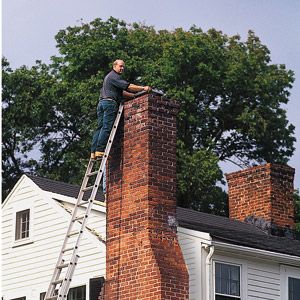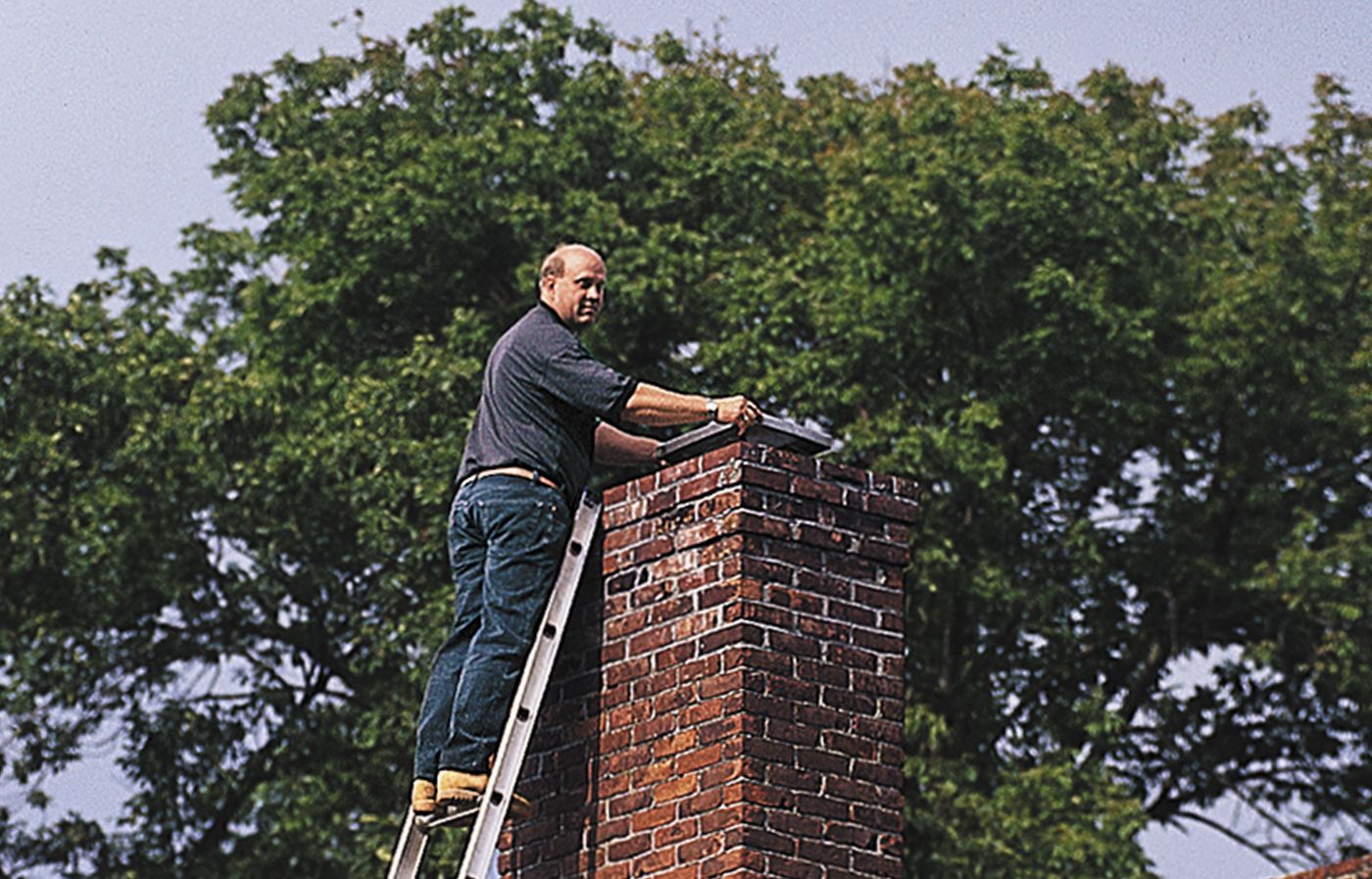
Before you succumb to your primal urges and set even a single log ablaze, be certain you’ve taken the steps required to make the fires you start this season as successful—and safe—as possible. Mark Schaub, of Chimney Savers in Hillsborough, New Jersey, has offered his expertise on many This Old House television projects. Here, he takes you through the drill.
1. Hire a Chimney Sweep
Book a pro to give your chimney and hearth its annual physical. A certified chimney sweep will inspect your masonry, flue liner, chimney cap, and venting system to make sure everything’s clean, clear, and up to code. You can locate a sweep through the Chimney Safety Institute of America (csia.org). Prices vary, but expect a basic hour-long inspection and cleaning to run around $200.
2. Test Your Gear
Shine a flashlight on the damper and try it out a few times to make sure it opens and closes tightly. Most wood-burning fireplaces have a metal grate to cradle firewood up off the bottom so air can circulate around the logs; if the grate is cracked or sagging, replace it. Sparks can fly into living areas through ripped screens or mesh that doesn’t close all the way; prevent injury and damage by lubricating or replacing worn-out mesh.
3. Use the Right Wood
Next to an annual sweeping, burning dry, split hardwood is the best thing you can do for your fireplace. It starts easily, burns for a long time, and leaves less creosote in the flue. Try to buy or cut wood in the late winter, before it’s full of spring sap, and let it dry outside for six months. Well-seasoned wood is grayish and furrowed with natural cracks. Bring in only as much as you need for your next fire; wood can harbor insects that may become active in the warmth of the house. Outside, keep the stack covered on top and open on the sides to keep the wood dry.
4. Warm the Flue
Smoke won’t rise if the flue is filled with cold air. To avoid downdrafts that can push out smoke and toxic fumes, warm up the air in the flue first. After you’ve opened the damper—and before you’ve lit the logs—encourage fireplace smoke to travel up and out the chimney by lighting a rolled-up sheet of newspaper and holding it in a gloved hand at the opening to the flue, so warm air can ascend.
5. Know What Not to Burn
Fireplaces make poor incinerators. Avoid tossing in Christmas trees, pizza boxes, and driftwood, which flare up fast and could cause a fire in a dirty chimney. Also on the “do not burn” list: painted or treated lumber and newspaper printed in color, because the preservatives and inks create noxious fumes. Manufactured firewood—formed of compressed sawdust, pencil shavings, copper sulfate, and paraffin wax—is a fine choice on its own, but don’t burn manufactured logs with real wood or flare-ups could result.
6. Don’t Overload the Firebox
Burning more than three logs at a time increases heat saturation, which could eventually ignite combustible materials adjacent to the fireplace and chimney. (This is a bigger issue with older fireplaces, which may not have the air gap between framing and masonry mandated by current codes.) Schaub recommends testing for heat saturation by placing your hand right above the mantel: If it’s too hot to keep your hand there, quit using the fireplace until you have the system inspected.
7. Build a Fire (the easy way)
Here’s Schaub’s foolproof technique for a cozy fire in 15 minutes: Ignite a fire-starter brick in the center of the grate. Next, place one log, lengthwise, behind the starter and another one in front of it. When those catch, place a log diagonally across them. This setup encourages combustion air to flow around all three logs.
8. Watch and Wait
“Fireplaces are like children. They need to be watched,” says Schaub. “Be prepared to stay with the fire until the end.” Let it burn out naturally—water tossed onto the fire can damage the firebox—then dispose of ashes safely in a metal bin left outdoors until the embers die. Never vacuum up fresh ashes. “You’d be amazed at how long embers can stay hot in a bed of ash,” Schaub says. “It could be a couple of days before they cool.”

